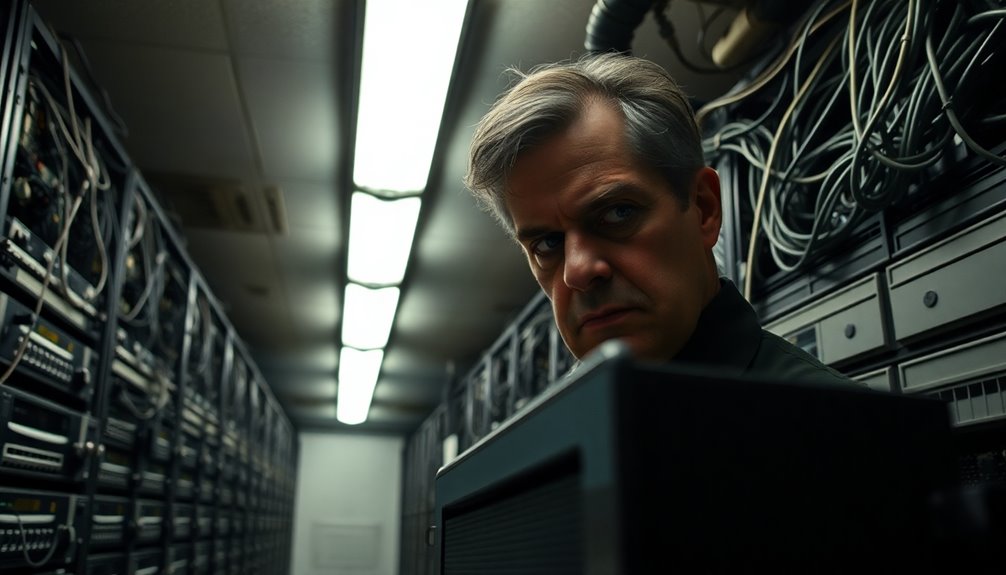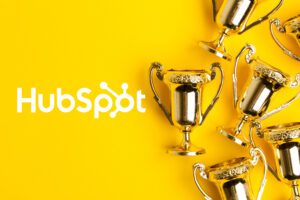You're struggling with outdated systems, hindering operations and guest satisfaction. Balancing cybersecurity with seamless guest experiences is essential, and compliance regulations stress your resources. Integrating diverse platforms and maintaining continuous connectivity across properties complicates your tech landscape. Competing for skilled IT talent worsens as you juggle budget constraints while aligning IT with business goals. But there's more to uncover about these ongoing challenges facing CTOs and CIOs in hospitality.
Highlights
- Legacy systems create operational inefficiencies, impacting both guest satisfaction and competitive advantage.
- Balancing cybersecurity with guest experience is critical, requiring innovative solutions and proactive threat management.
- Adapting to evolving data privacy regulations demands robust compliance measures and regular audits.
- Attracting skilled IT talent requires competitive recruitment strategies, appealing workplace culture, and growth opportunities.
- Aligning IT initiatives with business goals involves dynamic resource allocation and effective ROI measurement.
Navigating Legacy Systems and Outdated Technology

Despite the rapid advancement in technology, many hospitality businesses still grapple with legacy systems that can hinder operational efficiency and guest satisfaction.
You're likely aware that clinging to outdated technology isn't just about inconvenience; it's a growing technology debt. Every time you delay legacy system upgrades, you risk falling behind competitors who are leveraging cutting-edge solutions to enhance guest experiences.
The challenge lies in balancing the cost and complexity of upgrading with the undeniable benefits it brings.
Investing in legacy system upgrades can transform your operations, streamline processes, and elevate guest interactions. Furthermore, integrating smart digital solutions can provide a competitive edge while addressing these challenges.
But you need to act decisively. Embrace innovation and prioritize these upgrades to eliminate bottlenecks.
Balancing Cybersecurity Threats With Guest Experience
While ensuring high-quality guest experiences is a priority in the hospitality industry, it's essential not to overlook the ever-present cybersecurity threats.
You're tasked with the delicate art of maintaining an inviting atmosphere while fortifying your digital frontiers. Innovative solutions and robust cybersecurity training for your team can empower them to protect guest privacy without compromising on service excellence. Imagine equipping staff with real-time insights to identify and neutralize threats swiftly. This proactive approach not only safeguards sensitive data but also builds trust with tech-savvy guests who appreciate seamless, secure interactions. Additionally, implementing workflow automation can enhance efficiency in managing cybersecurity protocols and guest services simultaneously.
Managing Data Privacy and Compliance Regulations

Maneuvering the complex landscape of data privacy and compliance regulations is vital for any hospitality business aiming to build trust with its guests.
You're tasked with guaranteeing robust data encryption and conducting regular compliance audits. Stay ahead by keeping up with regulatory updates and performing risk assessments to safeguard sensitive information.
Develop thorough privacy policies and prioritize employee training to make sure everyone knows their role in protecting guest data.
Ensure comprehensive privacy policies and emphasize employee training for effective guest data protection.
Data retention policies must be scrutinized, and vendor management is essential—confirm third-party partners adhere to your standards.
Customer consent is paramount; always secure it transparently. When incidents occur, have a swift incident response plan.
Embrace innovation while maintaining a vigilant stance on privacy to foster guest loyalty and confidence. Additionally, leveraging digital solutions for operational efficiency can help streamline compliance processes and enhance data management practices.
Integrating Diverse Platforms for Seamless Operations
To achieve seamless operations in hospitality, integrating diverse platforms is essential, as it guarantees all systems work harmoniously.
You're tasked with ensuring platform interoperability, a challenge that demands innovative solutions. By fostering technology partnerships, you reveal potential synergies.
Here's how you can pave the way for seamless integration:
- Assess Compatibility: Begin by analyzing existing systems' compatibility. Don't shy away from adopting new technologies that promise better interoperability.
- Develop Strategic Alliances: Leverage technology partnerships to bridge gaps between platforms. Collaborate with vendors committed to creating adaptable solutions.
- Implement Middleware: Use middleware to connect disparate systems, ensuring data flows smoothly across platforms without disruption. Additionally, consider data-driven approaches to enhance decision-making and operational efficiencies.
Ensuring Continuous Connectivity Across Properties

Achieving continuous connectivity across properties is fundamental in the hospitality industry, as it directly impacts guest satisfaction and operational efficiency.
You need a robust wireless infrastructure to guarantee seamless guest connectivity and service continuity. Implementing network redundancy is critical to prevent downtime and maintain efficient operations.
A robust wireless infrastructure ensures seamless guest connectivity and service continuity, with network redundancy preventing downtime.
With IoT integration, smart devices enhance guest experiences but require precise bandwidth management to function at peak efficiency. Additionally, leveraging data-driven strategies can significantly improve operational performance and guest services.
Don't overlook the importance of regular technology upgrades to keep pace with innovation. Cloud solutions offer scalable options for data management, while mobile access empowers guests and staff alike.
Guaranteeing tech support is always available is essential for resolving unexpected issues quickly.
Attracting and Retaining Skilled IT Talent in a Competitive Market
While maintaining seamless connectivity is essential, the backbone of your digital infrastructure relies heavily on skilled IT professionals.
Charting talent acquisition in a competitive market requires innovative recruitment strategies. To attract top talent, you must offer competitive compensation and foster an appealing workplace culture.
To retain them, consider the following:
- Skill Development: Provide continuous learning opportunities that align with market trends to guarantee ongoing professional growth.
- Mentorship Programs: Implement initiatives that support career advancement and personal development, enhancing employee retention.
- Career Advancement: Clearly define paths for progression to motivate and engage your team.
In the fast-paced world of IT, focusing on these areas will help build a team that not only meets current needs but also drives future innovation. Additionally, leveraging data-driven strategies can enhance your recruitment efforts and improve employee satisfaction.
Aligning IT Initiatives With Business Goals and Budget Constraints
When you're aligning IT initiatives with your business goals and budget constraints, it's vital to strike a balance between innovation and costs.
You'll need to strategically allocate IT resources to guarantee that every dollar spent supports your objectives.
Measuring ROI effectively will help you justify expenditures and make informed decisions for future projects. Implementing optimized strategies can enhance your operational efficiency and ensure that your IT investments contribute to long-term growth.
Balancing Innovation and Costs
Balancing innovation with cost constraints is a perennial challenge in the hospitality industry, where aligning IT initiatives with business goals is essential.
You need to craft an innovation strategy that marries technology adoption with cost reduction and budget optimization. This delicate dance involves:
- Value Enhancement: Prioritize technologies that enhance guest experiences, ultimately driving revenue and performance improvement.
- Expense Control and Risk Management: Implement rigorous expense control mechanisms while managing risks associated with new tech investments.
- Investment Balancing: Allocate resources wisely to guarantee that each investment aligns with strategic goals without overstretching the budget.
Strategic IT Resource Allocation
To effectively allocate IT resources, it's crucial to align your initiatives with both business goals and budget constraints.
First, embrace resource prioritization by identifying projects that directly impact strategic objectives. This guarantees your IT investments drive innovation and growth.
Next, consider budget forecasting as a dynamic tool rather than a static number. By anticipating future needs and adapting financial plans accordingly, you can bridge the gap between visionary ideas and fiscal realities.
Remember, your goal is to create a symbiotic relationship between technology and business strategy. In doing so, you'll not only meet current demands but also pave the way for transformative advancements.
Stay agile, continuously reassess priorities, and let your IT roadmap be a catalyst for change.
Measuring ROI Effectively
While steering through the complexities of IT management in hospitality, measuring ROI effectively becomes essential to align IT initiatives with business goals and budget constraints.
Embrace innovative ROI measurement techniques to guarantee your tech investments drive value. Immerse yourself in performance metrics analysis to refine your strategies and maximize financial impact.
Here's how you can elevate your approach:
- Investment Justification Strategies: Clearly articulate the technology's value proposition through cost-benefit analysis methods to justify investments.
- Financial Impact Assessment: Evaluate the direct and indirect financial benefits of technology adoption using advanced technology adoption metrics.
- Stakeholder Engagement Strategies: Foster collaboration by communicating the ROI and value of IT initiatives, ensuring all parties are aligned and supportive.
Some Questions Answered
How Can Hospitality IT Leaders Manage Remote Work Challenges Effectively?
You'll effectively manage remote work by fostering remote collaboration through innovative tools. Embrace virtual team building activities to strengthen connections. Prioritize adaptable tech solutions that streamline communication, ensuring your team remains agile and productive in a dynamic environment.
What Strategies Exist for Handling Multi-Property IT Operations?
Imagine managing IT operations like orchestrating a symphony. You can streamline multi-property chaos with centralized management and cloud solutions. Embrace these tools, and you'll transform disjointed operations into harmonious, innovative masterpieces that resonate with efficiency.
How Do CTOS Address Sudden Technology Failures Impacting Guest Services?
You're tackling sudden tech failures by implementing robust crisis management plans. Prioritize swift resolutions and effective guest communication. Leverage innovative solutions like AI-driven diagnostics and real-time updates to minimize disruptions and enhance guest satisfaction during technology hiccups.
What Are the Hidden Costs of Implementing New Hospitality IT Solutions?
"There's no such thing as a free lunch." You might overlook hidden expenses when adopting new technology, like integration costs and staff training. Embrace innovation, but make certain you've accounted for all potential costs to avoid surprises.
How Do CIOS Prioritize IT Projects in Rapidly Changing Hotel Environments?
You're juggling rapid changes, so CIOs lean on agile project management to adapt swiftly. Prioritization strategies focus on aligning with business goals, enhancing guest experience, and leveraging technology innovations to stay ahead in competitive hotel environments.
Summing Everything Up
In the ever-evolving world of hospitality, your role as a CTO or CIO can feel like maneuvering through a labyrinth of challenges. Just as Odysseus faced trials, you juggle legacy systems, cybersecurity, and data privacy, all while ensuring seamless operations and connectivity. Attracting skilled talent and aligning IT with business goals adds another layer to your heroic journey. Remember, like any epic tale, your perseverance and adaptability will guide you to success amidst these untold struggles.





